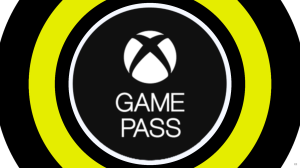
It’s time for some freaking adventure. Captain Toad: Treasure Tracker is back on the Nintendo Switch (and Nintendo 3DS), and I’ve been waiting to write this review for a very long time. I played my way through Captain Toad when it debuted on the Wii U back in 2014, and adored every moment of it. Now this mushroom-capped explorer is back on the Nintendo Switch (and 3DS) for his encore, and it’s one that you won’t want to miss.
Videos by ComicBook.com
Captain Toad: Treasure Tracker works on two basic levels. On the surface, this is a very clever game of hide-and-seek. There is something about our human nature that makes us love finding hidden things and claiming them as our own, and Captain Toad offers you over 70 games of hide-and-seek. On a deeper level, Nintendo does with Captain Toad what Nintendo does best with most games: it takes a few core mechanics, and continues to build upon them and cleverly iterate as the game progresses. Captain Toad cannot jump or fight, but by the end of this adventure, you’ll be amazed by everything he can do.
Each stage in Captain Toad is a thoughtfully-designed little 3D puzzle. Nintendo styles these stages as “mini universes,” and they can certainly feel that way. Each self-contained, cubic world has its own theme which impacts everything from the color palette to the side-missions you’re assigned.
It’s up to you to rotate the camera, get a lay of the land, and find your way to the goal. As you march goal-ward, however, you’ll be keeping an eye out for three hidden gems. Some of these gems are hidden in plain sight, while others are so cleverly tucked away, you’ll very likely have to replay the stages before you find them. The side-missions will offer you supplementary challenges to complete to earn a completion stamp. Some might require you to sneak through an entire stage without alerting any enemies, while others may ask you to solve more puzzle-based block stages with a limited number of interactions.

The side-missions really do add a great layer of depth to each stage, and rarely feel like afterthoughts. I’ve had a lot of fun going back to 100% every level, and there’s even an additional hide-and-seek game included in this version that was locked behind amiibo on the Wii U. If you’re the type to complete a level and move on, and you have no completionist tendencies whatsoever, Captain Toad will fly by. Collectors will get much more mileage out of this one.
This updated version of Captain Toad boasts a two-player co-op mode that will be great for parents playing with their kids, but less-than-engaging for older gamers. Player two is pretty much there to aim the gyro pointer at enemies to poke and stun them (something player one can do just fine on their own), and throw turnips at enemies. It definitely snaps things into “easy mode,” but we’re impressed that Nintendo made a point to make this happen in any kind of meaningful way.
There are also four brand new stages not seen in the Wii U version of Captain Toad, based off of various kingdoms from Super Mario Odyssey. They capture the spirit of their source stages perfectly, though we have to wonder along with every other Wii U owner why the four stages based on Super Mario 3D World had to die so that these Odyssey stages could live.
If you’re looking for an interesting story, or a deeper, more obscure peek into Super Mario lore, move along. This is a game of hide-and-seek, and beyond the core themes of searching for a kidnapped friend and looking for hidden treasure, you’re given next to zero narrative motive. The joy of the game is to play the game. Hell, there are really only two bosses to face in the entire campaign (though they do evolve). You’re here for the core puzzle stages and challenge stages, or nothing at all.

If that appeals to you, I’m confident that Captain Toad: Treasure Tracker will take you by surprise. It’s one of the Wii U’s unsung must-plays, and it’s more dazzling than ever on Nintendo Switch. The design and aesthetic represent what I consider to be the apex of Nintendo’s toybox style, with startling colors, beautifully-rounded geometry, gorgeous lighting, and bubbly overtones. It’s breathtaking, even by today’s technical standards, and it’s a surprisingly clever game by any standard.
ComicBook’s Score: 4 / 5








